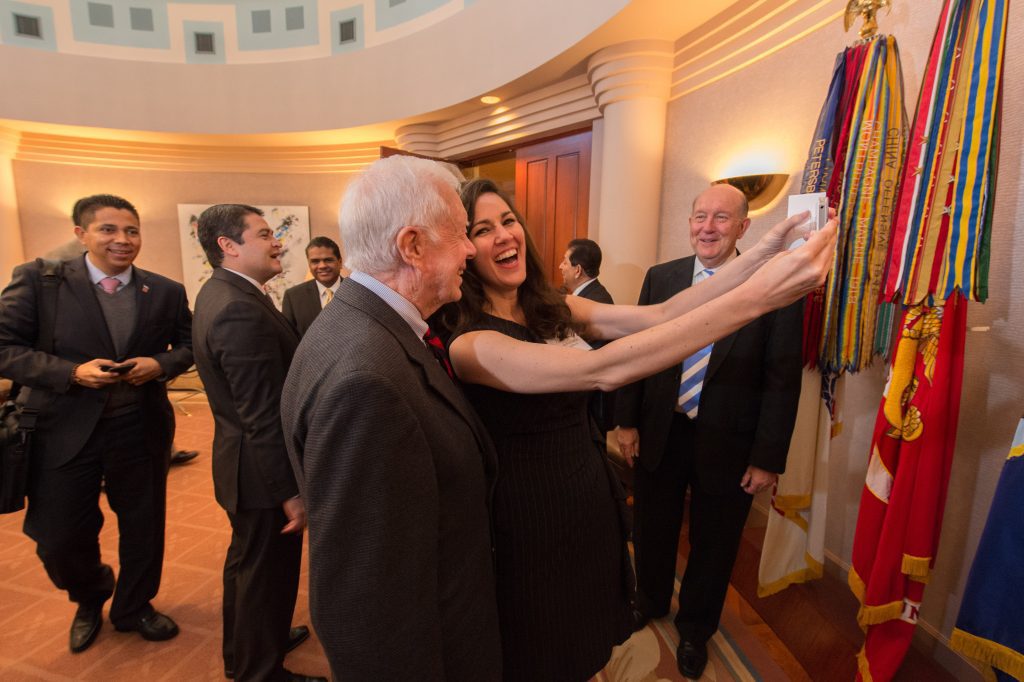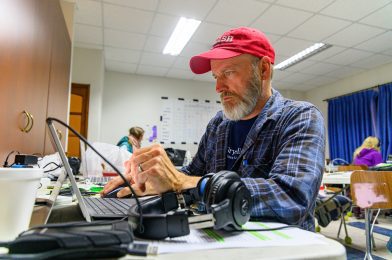Embarking on a Journey of Inspiration: A Reflection on Four Days with Chick-fil-A
For over a decade now, I’ve had the distinct privilege of being a part of an extraordinary annual tradition—the gathering of Chick-fil-A Operators, Staff, and their spouses for a profound journey of inspiration. As we convened once again to set the stage for 2024, I immersed myself in an atmosphere of enthusiasm, camaraderie, and a shared commitment to excellence.
Having covered Chick-fil-A’s annual meeting since 2009, I’ve witnessed firsthand the evolution of this remarkable event. Each year, it serves as a beacon of hope, a platform for innovation, and a source of renewed determination for all those who play a part in the Chick-fil-A story. And this year was no exception.
Over four transformative days, I had the opportunity to engage with Chick-fil-A Operators, Staff, and their spouses as they came together to draw inspiration, gain insights, and chart a course for success in the year ahead. The annual meeting catalyzed growth, unity, and empowerment, from spirited discussions and insightful presentations to heartfelt moments of connection and reflection.
In this blog post, I invite you to join me on a journey of discovery as we delve into the highlights, insights, and lessons learned from my time spent with Chick-fil-A’s dedicated community. Together, let’s explore the themes of leadership, innovation, and purpose that permeated every aspect of this extraordinary gathering and uncover its profound impact on shaping the future of Chick-fil-A and those it serves.
In the fast-paced business realm, leadership isn’t just a position—it’s an art, a skill set, and a mindset that can make or break an organization’s success. That’s why companies worldwide are eager to glean wisdom from leadership speakers who offer unique perspectives, strategies, and philosophies to navigate the complexities of modern leadership.
At a recent conference, I was privileged to capture moments with some of our most renowned leadership speakers: Adam Grant, Vanessa Van Edwards, Kondos Field, Will Guidara, and Marcus Buckingham. Each, with its distinct approach, sheds light on what it truly means to lead effectively in today’s dynamic landscape.

Adam Grant: Cultivating a Culture of Originality In the words of Adam Grant, “The hallmark of originality is rejecting the default and exploring whether a better option exists.” Grant, a renowned organizational psychologist, and bestselling author emphasizes the importance of fostering a culture where original ideas are encouraged and embraced. He advocates for leaders to create environments where innovation thrives, and employees feel empowered to challenge the status quo.

Vanessa Van Edwards: Mastering the Art of Communication Vanessa Van Edwards, a behavioral investigator and bestselling author, believes that effective leadership hinges on mastering the art of communication. She asserts, “Communication is not just about what you say; it’s about how you say it and how you make others feel.” Van Edwards emphasizes the power of nonverbal cues, body language, and emotional intelligence in building rapport, inspiring trust, and fostering collaboration within teams.

Kondos Field: Leading with Empathy and Authenticity As the legendary coach of the UCLA Bruins gymnastics team, Valorie Kondos Field, affectionately known as Miss Val, emphasizes the importance of leading with empathy and authenticity. She believes, “Authenticity is magnetic; people are drawn to genuine and empathetic leaders.” Kondos Field’s leadership philosophy centers on nurturing a supportive and inclusive environment where individuals feel valued, empowered, and inspired to achieve greatness.

Will Guidara: Elevating the Human Experience Renowned restaurateur and hospitality expert Will Guidara understands that exceptional leadership goes beyond business metrics—it’s about elevating the human experience. He asserts, “In the hospitality industry, we’re not just in the business of serving food; we’re in the business of making people feel seen, valued, and cared for.” Guidara emphasizes the importance of empathy, attention to detail, and a relentless commitment to exceeding expectations to create memorable experiences for customers and employees.

Marcus Buckingham: Harnessing the Power of Strengths Marcus Buckingham, a global expert on strengths-based leadership, believes that the key to unlocking individual and organizational success lies in harnessing the power of strengths. He advocates, “Great leaders don’t try to fix weaknesses; they focus on amplifying strengths.” Buckingham’s approach emphasizes identifying and leveraging an individual’s talents, passions, and strengths to drive workplace engagement, productivity, and fulfillment.
Marcus Buckingham advocates for a leadership approach centered around the transformative power of love. He emphasizes the importance of authentic connection, empathy, and understanding between leaders and their team members. Leaders can foster strong relationships, inspire commitment, and drive performance by creating a supportive environment where individuals feel valued and appreciated. Leading by example, they set the tone for a culture of kindness and compassion, ultimately positively impacting people’s lives. Buckingham believes that love in leadership is not just about being kind; it’s about driving success and creating lasting legacies of empowerment and fulfillment within organizations.
In Conclusion, As I reflect on the invaluable insights these esteemed leadership speakers shared, it becomes evident that effective leadership transcends traditional notions of authority and control. It’s about cultivating a culture of originality, mastering the art of communication, leading with empathy and authenticity, elevating the human experience, and harnessing the power of strengths.
In a rapidly evolving business landscape, companies that embrace these principles and invest in developing their leaders stand poised to survive and thrive amidst uncertainty and change. By heeding the wisdom of these visionary speakers and embracing a mindset of continuous growth and adaptation, organizations can chart a course toward sustained success and significance in the years to come.
What Can Freelancers Glean from Leadership Speakers?
Much like corporate leaders, freelancers operate within a dynamic and competitive landscape. Drawing inspiration from leadership speakers can offer invaluable guidance in running a successful freelance business. Like Adam Grant’s perspective, embracing visionary thinking can empower freelancers to innovate and differentiate themselves in their respective fields. Vanessa Van Edwards’ emphasis on emotional intelligence can guide freelancers in building strong client relationships and navigating diverse work scenarios gracefully. Kondo Field’s advocacy for purpose-driven leadership resonates deeply with freelancers, reminding them to infuse passion and meaning into their work. Will Guidara’s philosophy of servant leadership can inspire freelancers to prioritize client satisfaction and focus on delivering exceptional value. Lastly, Marcus Buckingham’s emphasis on people-centric approaches underscores the importance of understanding and catering to clients’ needs, fostering long-term partnerships built on trust and mutual respect. By integrating these insights into their business practices, freelancers can elevate their craft, enhance client satisfaction, and pave the way for sustained success in their endeavors.









































